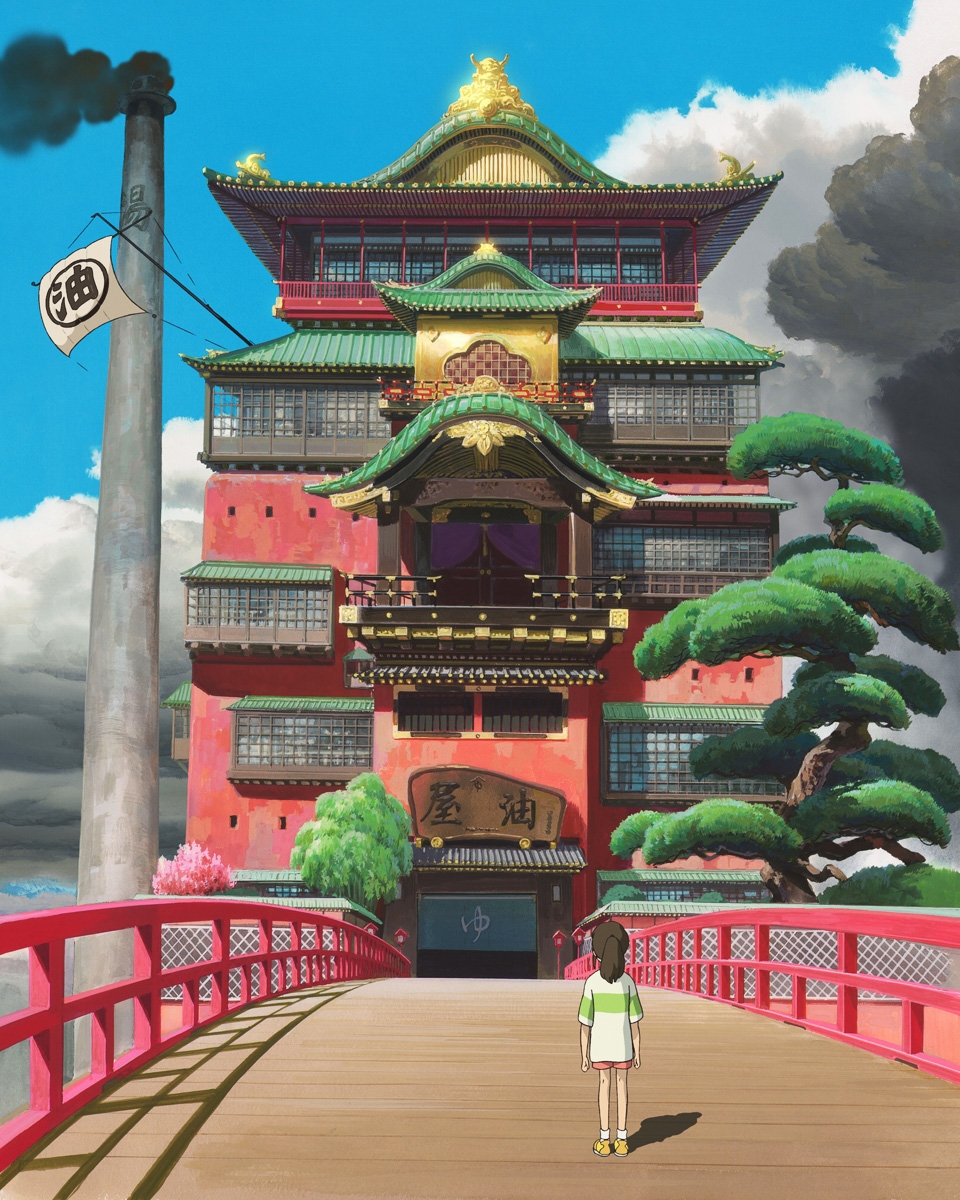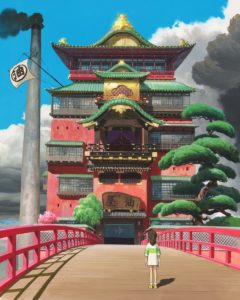

Originally released in 2001, “Spirited Away” won Best Animated Feature at the 75th Academy Awards, the only Japanese film to ever do so.
By Zachary Landau | Staff Writer
In celebration of its 15th anniversary, acclaimed Japanese animation studio Studio Ghibli released its seminal classic “Spirited Away”earlier this week to a limited run in select theaters. On Dec. 4, the English-dubbed version was shown while the subbed version ran on Dec. 5.
But what exactly warranted this film’s return to theaters? The easiest way to answer that is to simply watch it. “Spirited Away” is beautifully animated, and each frame demonstrates the love and commitment dedicated to producing this wondrous piece of art. Environments are beautifully colored and textured with bits of detail that are easily looked over. One scene that always stands out is when the film’s primary setting, the bathhouse, is first shown; the strikingly-red bridge that leads to its ornate doors set against a softly painted sky is always awe-inspiring. One of the last fully hand-drawn, full-length animated movies, “Spirited Away” is in a class of its own when it comes to demonstrating the fullest extent of the medium.
Not only that, but the story is beautiful in its own simplistic way. It follows Chihiro, a whiny and ineffectual girl without the courage of her convictions, as she and her family stumble upon an abandoned fairground. As it turns out, the place is not abandoned, but really a part of the spirit world. Because her parents (ravenously) ate the spirits’ food, Chihiro must work in a witch’s bathhouse for their freedom.
Chihiro’s parents being stuck in the spirit world provides a unique motivation for the hero of any movie, and the plot of a young girl working for her parents’ freedom is almost unheard of in children’s fantasy. This is not an epic quest or ultimate beast to overcome, but a child’s passiveness and a world that is seemingly as apathetic as she is. Her struggle, despite being fantastic, is immediately relatable, and her path to becoming a more confident, free-thinking individual plays out perfectly throughout the film’s runtime.
However, all of this great animation and story would be nothing if it were not for the voice actors who really do a spectacular job. Disney has been the champion of Studio Ghibli and Miyazaki here in the West, and their devotion to preserving the writing and delivery of the original film is something to be admired. Having listened to both the Japanese and English dubs of this film, I can say with certainty that “Spirited Away” features some of the best voice acting this industry has to offer.
All of this polish sounds great, but the real reason that this film has endured for so long is its deeper meanings. It is a film-industry trope that violence is universal and that action movies have an audience around the world because everyone understands physical conflict and strife. However, Miyazaki understood that there are other universals that resonate with everyone, regardless of age or nationality. Things like trust and selfishness, charity and repulsion or patience and greed. Virtues and vices are constantly at play in this movie, lending a depth to characters unseen in most media.
There is even a more subtle layer of symbolism underneath the already-superb story, one which accounts for the film’s unrivaled success in Japan. Without going too much into detail here, suffice it to say that a film about a younger child working in an ancient bathhouse in order to reverse her parents’ gluttony really struck a chord with a country going through a recession.
This emotional impact was clearly well-received at the time. Upon release, “Spirited Away” usurped “Titantic” for highest-grossing film in Japanese history. Stateside, the film was nominated for Best Animated Film in 2003 and won. It has also accrued over $289 million worldwide to date.
All told, it is no wonder then why “Spirited Away” has remained an exemplary film. Time has only been kind to it, and with its anniversary, it is certainly worth recounting how awesome this film was and continues to be.



